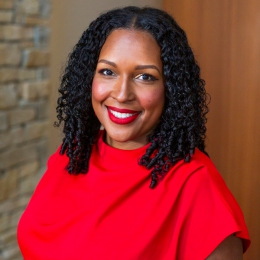7 Steps to Create a Budget that Actually Works
Posted On: March 10, 2023 in: Financial Education

Whether your financial focus is geared toward reaching a short-term goal (e.g., a vacation) or developing sustainable long-term savings habits (or both), a great way to make sure you’re on the right track is to create a budget … specifically, one that actually works for you!
No matter where you are starting in your budgeting journey, remember that the most important piece is that you’ve decided to start.
Here’s how.
Step 1: Establish Your Objectives
When you begin to budget, start by determining your top priorities. Your goals should include both short-term and long-term objectives. Defining that upfront will serve as a guide and allow you to start the budgeting process.
Short-term goals are those you might expect to achieve within six months to five years, and include things like vacations, a down payment for a larger purchase (vehicle or home), home improvements, a wedding, and more. Long-term goals are at least five-years out and might include opening a business, retirement, or paying off your mortgage.
Step 2: Reflect on Your Current Situation
Once you’ve set a goal, it’s time to determine your comfort zone. How comfortable are you with saving? Planning for retirement? Do you have a good understanding of your wants vs needs?
Start your assessment by determining your net income. You need to take out deductions, such as insurance and tax liabilities for example, to recognize the income you’re bringing in. A simple equation is: Gross Income – Deductions = Net Income.
Next, what are your current expenses or your day-to-day essential needs? Mortgage or rent, utilities, insurance, groceries … those are among the essentials. Some additional expenses may include childcare, education, or a vehicle.
The other part is recognizing your non-essential spending habits. Dining out, entertainment, travel, etc. are all expenses that generally fall into the “wants” category.
Step 3: The Right Budget Template is Essential
If there’s one thing to emphasize about budgeting, it’s finding a format that works for you. If you find one that you like, you’re more likely to stick to it.
There are many templates out there. Excel provides a few options within its “Templates” tab if you type “budget” into the search bar. You can also use a search engine to find a template (just be safe when you’re downloading). Some people simply prefer to budget on paper. We also have services at Park Bank to help those who are just starting to learn how to start.
We recommend using a format you choose allows you to adjust your auto-saving amount (if you want to save 20 percent, for example). Doing this takes the amount you want to save out of your net income, so you don’t see it. It’s kind of like you’re subtracting it, but you’re always in that “mode of saving.” At Park Bank, we call it “paying yourself first.”
At a minimum, your template should show the money you have coming in, the debt you currently have, and allows you to type in your spending.
Step 4: It’s Okay to Have Wants, But Plan for Them
We touched on this earlier, but what exactly does your bucket of non-essential costs, or wants, look like? We all have “wants” and some are non-negotiable to us. It’s okay to have wants if you plan for them.
How much do you typically spend on dining out each month? Are you paying for services or subscriptions you no longer use? Consider your wants, then consider how you might reduce or eliminate some. This will help you to plan more effectively to reach your goals.
Step 5: The Right Ratio Can Help Guide You
Everyone’s financial situation is different. Some have more flexibility than others. But the standard ratio I use is “50-20-30” – approximately 50 percent is your needs, 20 percent (or more) is your savings, and your spending shouldn’t be above 30 percent.
Step 6: Creating a Savings Goal
Here’s a scenario. Say your goal is to go on vacation in two years and it’s going to cost $5,000. You have $500 to contribute today. Now your goal is to save $4,500 in 24 months. That’s $187.50 you’ll need to save each month.
Free online calculators are available that provide the amount you need to save each month based on your timeframe and savings goal. Type “calculate savings goal monthly” into a search engine to find these calculators (again, search safely). Investor.gov’s “Savings Goal Calculator” is a good example.
If your goal is more general (e.g., to cut down on non-essential spending), another approach is to start budgeting annually. Sit down and review the whole year, month by month. What savings behaviors do you want to shift? Not to say you have to be perfect at it right away, but if you start shifting behaviors now, it will help later.
Step 7: Establish a Relationship with Your Banker
Talking about your finances is a very personal thing and it’s important to have trust.
Establish a good relationship with your banker. Call your banker and share what you’re looking to do. Once you have that relationship, you’ll have someone who can help guide you that knows your full story.
Your banker can be your accountability partner. When you have that relationship, it can be fun because you’re both celebrating your successes. As bankers, we want to hear you say: “Yes, I met that goal!” — “I’m right there!”
At the end of the day, it helps to have a financial partner you trust.
At Park Bank, we’re big on working with individuals to make sure they feel comfortable talking about their whole financial picture with us. The more we know, the more we can help and guide you.
Let’s get your personal finances to next!
About The Author: Suzanne Johnson serves as First Vice President Branch Banking at Park Bank. Johnson joined Park Bank in February of 2018 and has 20 years of professional banking experience in the Madison area. If you’d like to get in touch, please reach out to Suzanne via email or call her at 608.278.2883.

